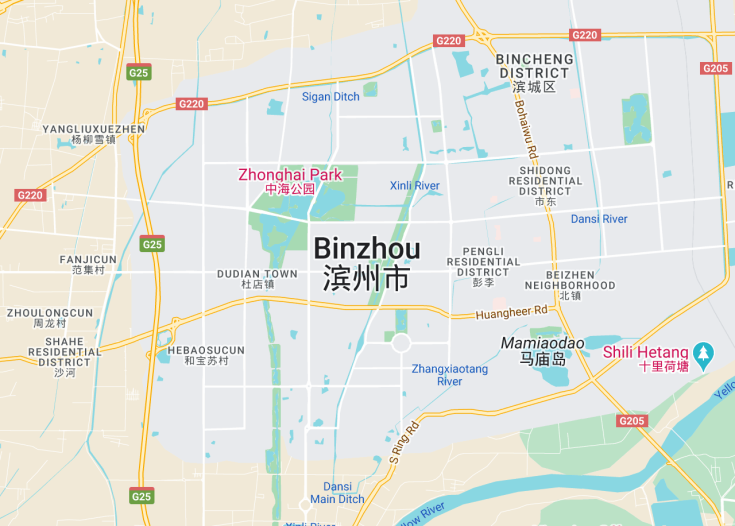Binzhou, situated in the northern province of Shandong, China, boasts a rich historical tapestry and vibrant cultural heritage. Known for its significant role in ancient Chinese civilization, Binzhou offers a plethora of ancient sites, temples, and monuments that narrate tales of its storied past.
Aside from history, the region is graced with beautiful landscapes, including the Yellow River’s majestic flow near its borders. Visitors can explore the assorted local cuisine and participate in traditional festivals to fully immerse themselves in the authentic local culture, making Binzhou a captivating destination for travelers seeking both historical insight and scenic beauty.
Before visiting Binzhou, check the local weather conditions as the region experiences distinct seasonal variations that could affect your travel plans and outdoor activities.
Make sure to visit during the Lotus Festival in July when Binzhou’s lakes and ponds are spectacularly adorned with blooming lotuses, turning the area into a picturesque landscape.
Top things to do & see in Binzhou
Select the following sights and activities to discover best tickets and tours available in Binzhou.
Binzhou: Gateway to the Yellow River
| Country | China |
| Time in Binzhou | GMT+8 |
| Language spoken | Chinese (Mandarin) |
| Population | 3.7 million (source: China Statistical Yearbook 2021) |
| Currency | Chinese Yuan (¥, CNY) |
| Airports |
|
Binzhou, located in northern Shandong, China, is a city rich with historical and cultural significance. Nestled near the iconic Yellow River, it has been an essential hub of agriculture and industry. The city’s origins trace back to the ancient state of Bin, making it a resonant site for those interested in China’s extensive historical narrative. Over the years, Binzhou has balanced modernization with preserving its heritage, housing several parks, museums, and cultural spots that highlight its storied past and vibrant present.
Where is Binzhou?
Binzhou is situated in the northern part of Shandong province in the Eastern region of China.
Distances:
| Route | Distance by car | Time by car |
|---|---|---|
| Beijing to Binzhou | 319 miles (514 km) | Approx. 5 hours |
| Shanghai to Binzhou | 580 miles (933 km) | Approx. 9 hours |
| Jinan to Binzhou | 103 miles (166 km) | Approx. 2 hours |
What is Binzhou famous for?
Binzhou is famous for its role in agriculture, serving as a key site for the production of wheat and cotton in China. It is also known for holding cultural significance due to its proximity to the Yellow River.
History
Prehistoric Times to the Han Dynasty
The region now known as Binzhou has a history that dates back thousands of years. Evidence of early human habitation comes from various archaeological finds that suggest the presence of people during the Neolithic Age. The area became more prominently recognized during the Zhou Dynasty when it was part of the ancient state of Qi. Throughout this period, Binzhou benefited from its strategic location along the Yellow River, which facilitated agriculture and trade.
Three Kingdoms to the Qing Dynasty
The historical significance of Binzhou continued into the period of the Three Kingdoms and the succeeding dynasties. It was often a site of military strategic importance due to its proximity to the Yellow River and numerous other states. During the Tang and Song Dynasties, the region prospered culturally and economically. By the time of the Qing Dynasty, Binzhou had developed significantly, though it was also a period marked by challenges, including floods and famines.
Modern Era
Entering into the 20th century, Binzhou witnessed substantial change. The establishment of the People’s Republic of China in 1949 led to industrial growth and urban development in the area. More recently, the city has seen an expansion in its educational facilities and infrastructures, such as roads and bridges, enhancing both the quality of life for its inhabitants and its appeal as a center of commerce and culture in the province of Shandong.
Visit Binzhou
What to see and do in Binzhou
Visitors to Binzhou, China, can explore a variety of historical and cultural sites that highlight the area’s rich heritage. A must-visit is the Binzhou Historical Museum, which offers insights into the region’s past from prehistoric times to the modern era. For those interested in ancient architecture, the Qing Dynasty Courtyard Houses provide a glimpse into historical residential designs.
- Shuangfeng Wetland Park—Experience the local flora and fauna.
- Zhengtong Road—Explore the local markets for souvenirs and traditional snacks.
Seasonal Celebrations in Binzhou
Throughout the year, Binzhou hosts various cultural and seasonal festivals. The Spring Festival, celebrated nationwide in January or February, is vibrant with traditional dances and customary foods. In autumn, the Mid-Autumn Festival sees locals and visitors alike enjoying moon cakes and participating in moon-viewing parties.
Best time to visit Binzhou
The optimal time to visit Binzhou is during spring (April to June) and autumn (September to November). These months offer mild weather, making it comfortable to explore the outdoors and participate in local festivals.
Is Binzhou worth visiting?
Binzhou offers a rich tapestry of history and cultural experiences that are certainly worth exploring. The city’s museums, historical sites, and natural parks provide a comprehensive look at both the ancient and modern life in the region.
However, visitors should be aware that the city is less commercialized compared to other tourist destinations in China, which means fewer amenities tailored specifically for international tourists. Despite this, for those interested in a genuine slice of Chinese heritage and rural life, Binzhou holds significant appeal.










